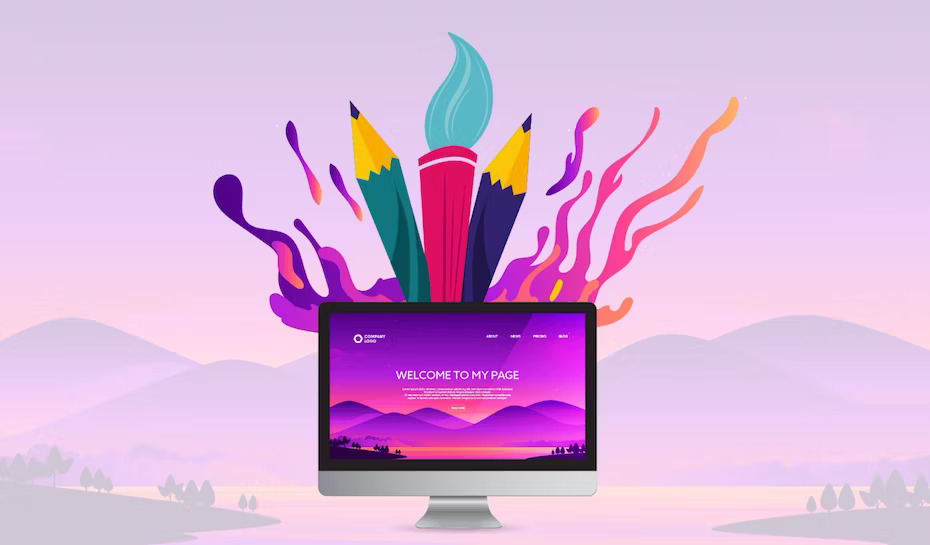The importance of user experience in web design

User experience (UX) plays a vital role in web design. It focuses on enhancing the overall experience of users when they interact with a website or an application. It encompasses various aspects, including usability, accessibility, visual design, information architecture, and interaction design, just to name a few. UX takes into consideration both the functional and emotional aspects of user interaction.
In this article, we will delve into the importance of UX in web design and why it should be a top priority for designers and businesses.
One of the primary reasons why UX is crucial in web design is because it directly influences user satisfaction. A poorly designed website can lead to frustration, confusion, and ultimately, a negative experience for users. On the other hand, a well-designed website can create a seamless and enjoyable user journey, resulting in increased satisfaction and user engagement. A positive user experience encourages users to stay longer on the website, explore more content, and potentially convert into customers or loyal followers.
UX also plays a significant role in shaping the perception users have of a brand or a business. A visually appealing and user-friendly website creates a positive impression, making users more likely to trust and engage with the brand. In contrast, a poorly designed website can give the impression of a disorganized or unprofessional business, leading users to doubt the credibility and legitimacy of the brand. Research shows that users decide within seconds whether they trust a website or not based on its design and usability.
Another important aspect of UX is usability. A website should be easy to navigate and use, with intuitive menus, clear calls to action, and easily accessible information. Users should be able to find what they are looking for quickly and efficiently. A well-organized information architecture and a logical flow of content can greatly enhance usability. Good UX design takes into consideration the target audience and their needs, ensuring that the website meets their expectations. Conducting user testing and gathering feedback are essential in optimizing usability and identifying potential pain points.
In today’s digital era, accessibility is another vital consideration in web design. An accessible website ensures that people with various disabilities can access and use the website without barriers. This includes individuals with visual impairments, hearing impairments, cognitive disabilities, and motor impairments. By incorporating accessibility features and following web accessibility guidelines such as WCAG (Web Content Accessibility Guidelines), designers can provide equal opportunities for everyone to access and benefit from their website’s content and functionality.
Furthermore, UX has a significant impact on the performance and success of a website. A well-designed website with a seamless user experience can lead to higher conversion rates, increased customer satisfaction, and improved brand loyalty. On the other hand, a poorly designed website can result in high bounce rates, low engagement, and missed business opportunities. According to a study by Google, 79% of users are likely to leave a website and look for an alternative if they are unhappy with its performance or user experience. Therefore, investing in UX design is not only beneficial for users but also crucial for the success of a business.
To achieve a good user experience, designers follow a user-centered design process. This involves understanding the target audience, conducting user research, creating user personas, designing user flows, wireframing, prototyping, and continuously iterating and testing the designs based on user feedback. It is essential to design with empathy, putting yourself in the shoes of your users and anticipating their needs and expectations.
In conclusion, user experience is of utmost importance in web design. It directly affects user satisfaction, brand perception, usability, accessibility, and overall website performance. Investing in UX design is essential for businesses that want to create engaging, trustworthy, and successful online experiences for their users. By prioritizing UX, designers can ensure that their websites are not only visually appealing but also intuitive, accessible, and optimized for a positive user journey.
So, let’s embrace the power of UX and design websites that leave a lasting impression on users.
Our Services












9 Comments. Leave new
[…] 2. Intuitive Navigation: […]
[…] 1. User Experience: […]
[…] 2. Streamlined User Experience: Simplify navigation, layout, and overall design to enhance user experience. A user-friendly website reduces friction and increases the likelihood of conversions. […]
[…] 2. Enhanced User Experience: […]
[…] Focus on User Experience and Intent: When selecting keywords, always prioritize user experience and intent. Think about the […]
[…] 2. Enhanced User Experience: […]
[…] User Experience (UX) will be […]
[…] and search engine optimization (SEO). Engaging and high-quality content not only enhances user experience but also improves your website’s visibility on search engines, driving organic traffic to […]
[…] Do you need a suitable brand name for your business? Taking the time to choose and design a brand, logo or internet domain can increase the final cost of WordPress website design. If you are looking for a unique and personalized website that reflects your brand identity, additional customization will be necessary. Customizing the design, color scheme, typography, and layout to align with your branding guidelines requires more time and effort from web designers, thus increasing the cost of WordPress website design. However, this investment can pay off in terms of establishing a strong brand presence and creating a memorable user experience. […]